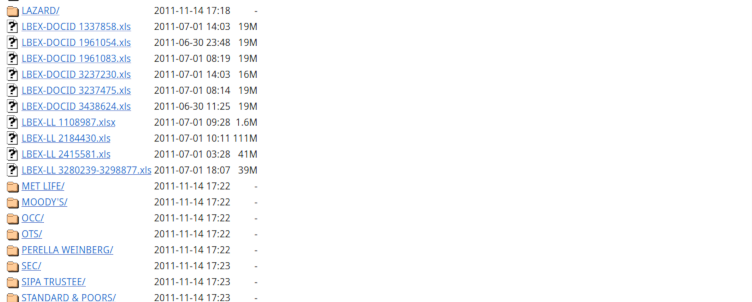Hardening Apache on an unmanaged VPS#
Published on May 22, 2022 by Fayçal Alami-Hassani @gnufcl@fosstodon.org

This guide is a follow-up to the post published last week about Migrating Joomla from shared hosting to an unmanaged VPS. In this tutorial, you will learn how to implement a set of security measures to protect your Apache web server on Debian-based Linux systems.
Prerequisites#
This tutorial assumes that you already have the following:
LAMP stack installed on your VPS server. LAMP is short for “Linux + Apache + MySQL + PHP”.
Non-root user with sudo privileges on your VPS server.
SSH access to your VPS server.
Before you follow this guide, make sure to configure your environment accordingly.
Running Apache with an unprivileged user#
The “principle of least privilege” is a security best practice in the context of server administration. According to this principle, you should grant users only the strict minimum of permissions they need to perform their tasks. Therefore, running your Apache web server with a non-root user helps you prevent abusive access to the system.
To manage user and group privileges on your server, you need to access the envvars file. This file contains the environment variables of your Apache web server.
First, type the following command in your terminal:
$ sudo nano /etc/apache2/envvars
In the file that opens, navigate to the following lines:
1# Since there is no sane way to get the parsed apache2 config in scripts, some 2# settings are defined via environment variables and then used in apache2ctl, 3# /etc/init.d/apache2, /etc/logrotate.d/apache2, etc. 4export APACHE_RUN_USER=apache 5export APACHE_RUN_GROUP=apache
Set the variables
APACHE_RUN_USERandAPACHE_RUN_GROUPto a non-root user and group, respectively.The table below illustrates some possible values for a non-root
userandgroup:↓ Value Pair / Environment Variable →
APACHE_RUN_USER
APACHE_RUN_GROUP
VALUE PAIR 1
apache
apache
VALUE PAIR 2
nobody
nogroup
VALUE PAIR 3
www-data
www-data
Hiding your operating system and Apache version#
Each time a user connects to your website, your server sends so-called response headers to the user’s browser. Response headers are HTTP headers containing metadata that is not related to the main message being exchanged between the client and your server.
In the default configuration, your web server exposes sensitive information about your infrastructure such as the operating system (OS) and the Apache version installed on the server.
You can check this by using a tool such as cURL. In your terminal, type the following command:
$ curl -IL your-domain-name
You should then get an output like the one below. Note that the details of your OS and Apache version appear on lines number 3 and 9 under the Server entry:
1HTTP/1.1 301 Moved Permanently
2Date: Sun, 22 May 2022 19:57:25 GMT
3Server: Apache/2.4.25 (Debian)
4Location: https://your-domain-name/
5Content-Type: text/html; charset=iso-8859-1
6
7HTTP/1.1 200 OK
8Date: Sun, 22 May 2022 19:57:25 GMT
9Server: Apache/2.4.25 (Debian)
10Expires: Wed, 17 Aug 2005 00:00:00 GMT
11Last-Modified: Sun, 22 May 2022 19:57:25 GMT
12Cache-Control: xxx, xxx, xxx-xxx, xxxxxxx, xxxxxxxx
13Pragma: no-cache
14X-Content-Type-Options: nosniff
15X-Frame-Options: sameorigin
16Content-Type: text/html; charset=utf-8
To hide your operating system and Apache version, you need to adjust the settings of your
apache2.conffile. To revert your settings to their initial state in case of a faulty configuration, you should first make a backup of this file with the following command:$ sudo cp /etc/apache2/apache2.conf /etc/apache2/apache2_bak.conf
Next, open the
apache2.conffile by typing this command in your terminal:$ sudo nano /etc/apache2/apache2.conf
In the file that opens, scroll down to the bottom and add the following two lines:
ServerTokens Prod ServerSignature Off
Press
Ctrl + Oto save your changes andCtrl + Xto close the nano editor.Run the following command to restart Apache:
$ sudo systemctl restart apache2
In your terminal, retype the following command:
$ curl -IL your-domain-name
The new output should now look like this:
1HTTP/1.1 301 Moved Permanently
2Date: Sun, 22 May 2022 19:57:25 GMT
3Server: Apache
4Location: https://your-domain-name/
5Content-Type: text/html; charset=iso-8859-1
6
7HTTP/1.1 200 OK
8Date: Sun, 22 May 2022 19:57:25 GMT
9Server: Apache
10Expires: Wed, 17 Aug 2005 00:00:00 GMT
11Last-Modified: Sun, 22 May 2022 19:57:25 GMT
12Cache-Control: xxx, xxx, xxx-xxx, xxxxxxx, xxxxxxxx
13Pragma: no-cache
14X-Content-Type-Options: nosniff
15X-Frame-Options: sameorigin
16Content-Type: text/html; charset=utf-8
Note that your OS and Apache version details have disappeared from lines 3 and 9. The Server entry only shows Apache without any further details.
Disabling open directory listings#
If a directory inside your filesystem lacks an index file such as index.html or index.php, the web server automatically generates a listing of that particular directory. When this feature is enabled, intruders and eavesdroppers can explore the content of your folders to spot any existing vulnerabilities.

An example of an open directory listing#
To protect your directory content against curious eyes, you need to modify the configuration of your apache2.conf file.
Open the file with your nano editor by typing the following command:
$ sudo nano /etc/apache2/apache2.conf
In the file that opens, scroll down to the following directive block:
<Directory /var/www/> Options Indexes FollowSymLinks AllowOverride None Require all granted </Directory>Add a minus sign “-” before the keywords
IndexesandFollowSymLinksto prevent Apache from generating open directory listings and following symbolic links. The result should look like this:<Directory /var/www/> Options -Indexes -FollowSymLinks AllowOverride None Require all granted </Directory>Press
Ctrl + Oto save your changes andCtrl + Xto close the nano editor.Restart Apache with the following command:
$ sudo systemctl restart apache2
Installing a web application firewall#
A web application firewall (WAF) protects your applications from malicious attacks by scanning and filtering HTTP traffic. ModSecurity is an open source WAF that provides multiple security features including monitoring, logging, and real-time traffic inspection. You can install ModSecurity on your Apache web server with the free module mod_security2.
To install
mod_security2on Debian-based distributions, type the following command in your terminal:$ sudo apt install lib-apache2-mod-security2
Check if
mod_security2is up and running on your system by running the command:$ sudo apachectl -M | grep --color security
You should get the following output:
$ security2_module (shared)
Note
When you install
mod_security2for the first time, ModSecurity runs in detection-only mode. That is, it detects and logs suspicious activity, and no more than that. To block unwanted traffic, you need to modify the default ModSecurity configuration file:modsecurity.conf-recommended.Rename the file
modsecurity.conf-recommendedtomodsecurity.confby typing the command below:$ mv /etc/modsecurity/modsecurity.conf{-recommended,}Open the new file with your nano editor:
$ nano /etc/modsecurity/modsecurity.conf
In the file that opens, navigate to the directive:
SecRuleEngine DetectionOnly
Replace the value DetectionOnly by the new value On.
Press
Ctrl + Oto save your changes andCtrl + Xto close the nano editor.Restart Apache with the following command:
$ sudo systemctl restart apache2
From now on, ModSecurity will also block unwanted traffic.